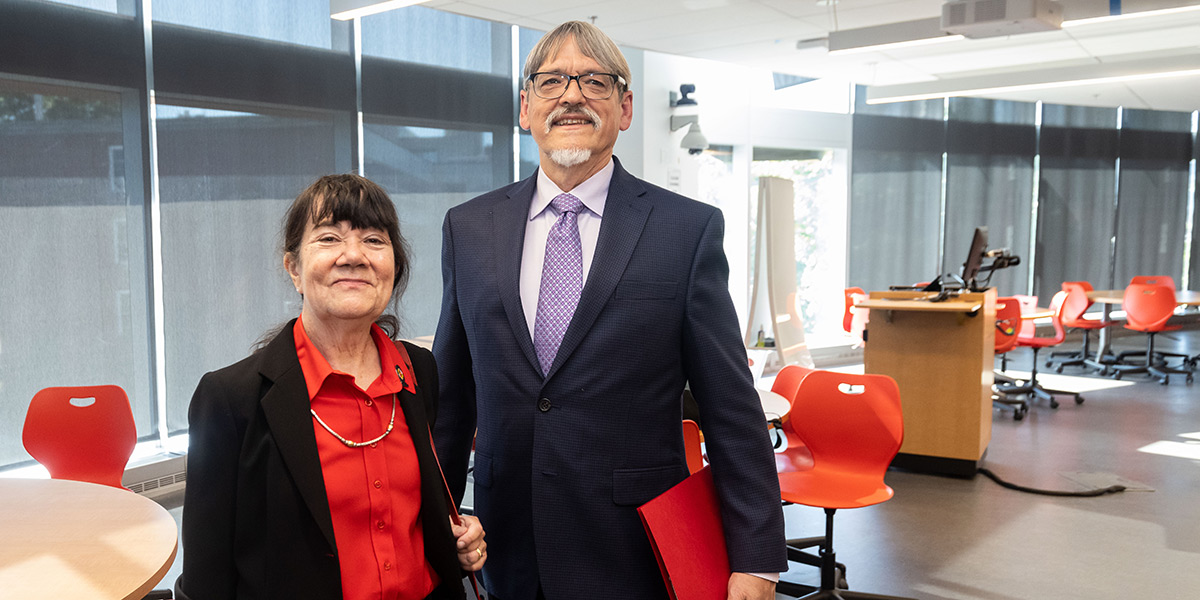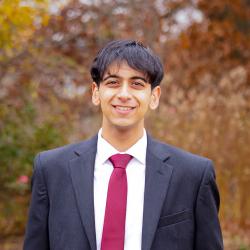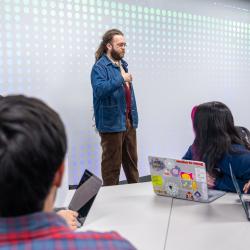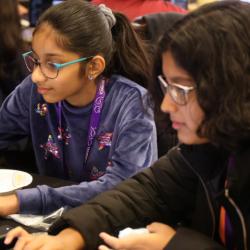Computer Science Alums Craig and Sharon Stanfill Give Back To ‘Foundational’ Department

Craig Stanfill (Ph.D. ’83, computer science) discovered he had a knack for programming in high school. After a brief stint as a biochemistry major at Michigan State University—Stanfill described himself as a klutz in the laboratory—he switched his major to math and graduated with a bachelor’s degree in 1973.
To further explore his earlier interests in programming, Stanfill entered the University of Maryland’s computer science graduate program in 1979 to study artificial intelligence under Professor Charles Rieger III. His dissertation focused on knowledge representation, a branch of artificial intelligence that involves the development of methods to represent real-world information in a way that computers can understand.
While working on his Ph.D., Stanfill learned from faculty members including Laveen Kanal, Marvin Zelkowitz and John Gannon, along with Hanan Samet and Dana Nau, who joined Rieger on his dissertation committee.
Stanfill credits Mark Weiser—an assistant professor of computer science at the time—for helping him graduate after his advisor left UMD in 1982.
“Mark Weiser was like my step-advisor and a really wonderful person,” Stanfill said. “He understood the risk of being an ‘orphan’ grad student and really took care of me and the rest of Professor Rieger’s students.”
After graduation, Stanfill joined Thinking Machines, a Massachusetts startup specializing in massively parallel computers, which speed up computations by dividing up the problem to be computed in many pieces and solving each of the pieces simultaneously. Many supercomputers today, such as IBM’s Watson, employ this strategy to solve complex problems.
“Parallel computing is mainstream technology today, but back then it was quite radical and it was an open question as to whether you could do anything useful with it,” Stanfill said.
Stanfill collaborated with Brewster Kahle, an engineer at Thinking Machines, to develop a high-performance information retrieval system running on an experimental massively parallel supercomputer called The Connection Machine, the first model of which shipped in 1986.
“At some level, this work was the great-great-grandfather of Google and similar technologies,” Stanfill noted. “But something like Google was not commercially viable at the time.”
He also worked with David Waltz on parallel algorithms to mine large volumes of data and used artificial intelligence techniques to enable automatic decision-making by the computer, work that proved foundational to the field now called data science.
Thinking Machines went on to manufacture five models of the Connection Machine before developing financial problems that ultimately culminated in the company filing for bankruptcy in 1994. During his time at Thinking Machines, Stanfill became interested in commercial data processing.
In 1995, Stanfill co-founded a company called Ab Initio with other former employees of Thinking Machines. They developed a single platform that could handle many types of high-volume data processing, especially in the context of corporate computing.
“We looked at what we knew how to do, and we decided that corporate computing had huge unmet needs that we could solve in a fairly short period of time,” said Stanfill, who is the company’s chief technology officer. “So we sat down, wrote code like demons for a year or two and bootstrapped our way into the marketplace.”
One achievement that Stanfill is particularly proud of at Ab Initio is the Co>Operating System, a parallel computing framework. This system provides an environment for building, integrating and running enterprise business applications such as financial trading, internet ad placement and real-time monitoring of manufacturing lines.
“It was the foundation of our platform—our first product—and it was more successful than I could have dreamed,” Stanfill said.
Today, Ab Initio is a multinational corporation serving customers that include government agencies, financial exchanges, health care companies and more.
“We never wanted to be a huge company, but we’ve built a substantial one,” Stanfill said. “We’ve had a huge impact on many other companies and how they use their computers to do business, and that’s something I find very pleasing.”
Stanfill said that his UMD experience helped him to succeed by giving him a foundation in computer science knowledge and teaching him how to think about problems abstractly.
“I was given a solid foundation that stretches across the breadth of computer science,” Stanfill said. “I was also taught to dig down into the fundamentals of what is going on rather than simply writing a program to do something. And I have always leaned heavily on that foundation throughout my career.”
For those reasons, Stanfill and his wife, Sharon (B.S. ’81, computer science)—whom he met while at UMD—donated $250,000 to name a large, collaborative classroom in the Brendan Iribe Center for Computer Science and Engineering that opened in 2019. The classroom contains interactive technologies and flexible seating for collaborative group work and experiential courses.
In 2023, the Stanfills made a $3 million estate gift to establish the Craig and Sharon Stanfill Endowed Chair in Computer Science, which will be held by a faculty member with expertise in enterprise computing.
“Those who came before me were willing to put their time and resources into building a very special research department that allowed me to get my start in life,” Stanfill said. “Now that it’s my turn, I’m more than happy to enable the next generation to have the wonderful experience that I had. If I can help one person have that wonderful career and wonderful life that I’ve had, then what more could I ask for?”
The Department welcomes comments, suggestions and corrections. Send email to editor@cs.umd.edu.







